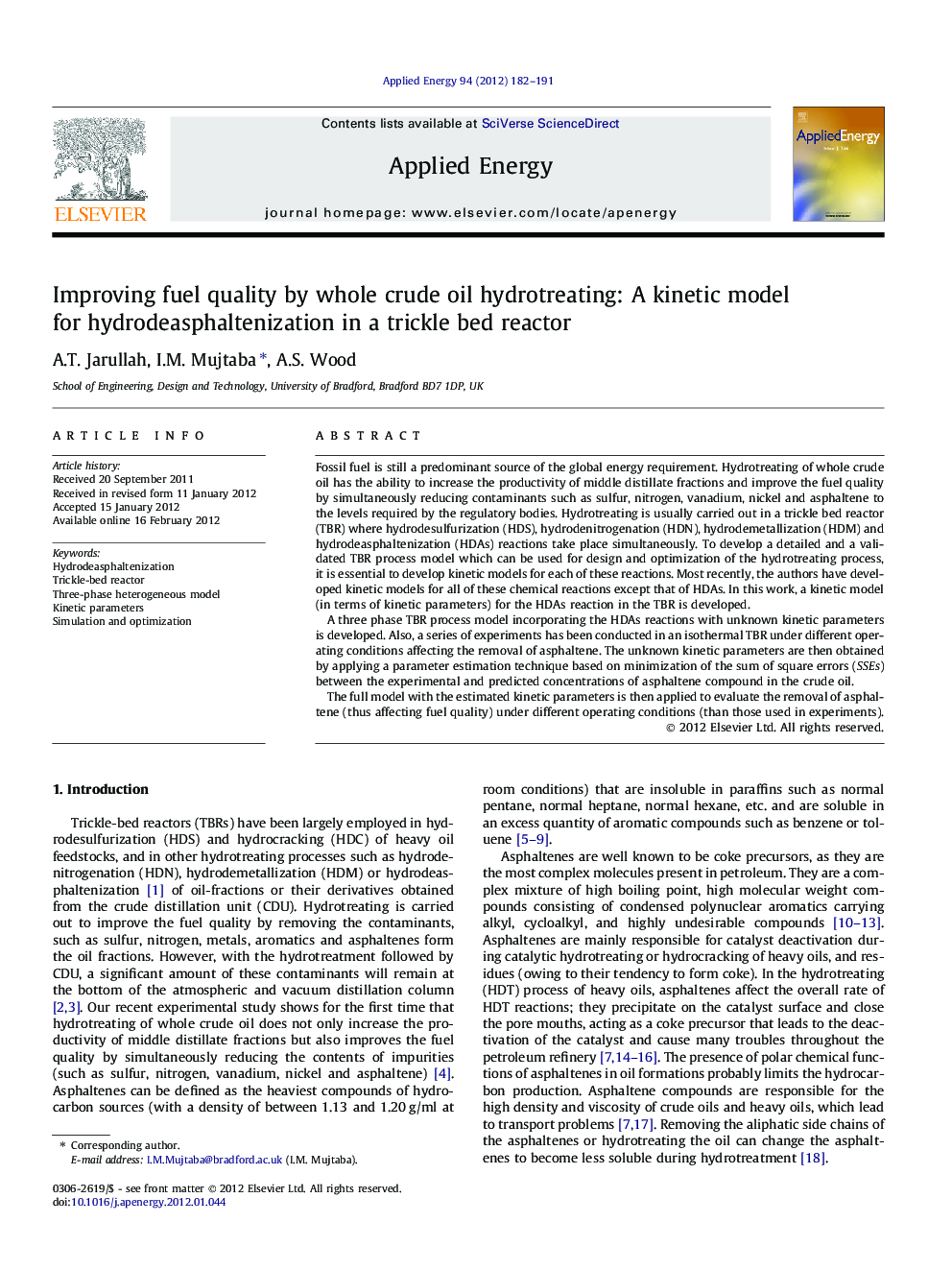| کد مقاله | کد نشریه | سال انتشار | مقاله انگلیسی | نسخه تمام متن |
|---|---|---|---|---|
| 243405 | 501928 | 2012 | 10 صفحه PDF | دانلود رایگان |

Fossil fuel is still a predominant source of the global energy requirement. Hydrotreating of whole crude oil has the ability to increase the productivity of middle distillate fractions and improve the fuel quality by simultaneously reducing contaminants such as sulfur, nitrogen, vanadium, nickel and asphaltene to the levels required by the regulatory bodies. Hydrotreating is usually carried out in a trickle bed reactor (TBR) where hydrodesulfurization (HDS), hydrodenitrogenation (HDN), hydrodemetallization (HDM) and hydrodeasphaltenization (HDAs) reactions take place simultaneously. To develop a detailed and a validated TBR process model which can be used for design and optimization of the hydrotreating process, it is essential to develop kinetic models for each of these reactions. Most recently, the authors have developed kinetic models for all of these chemical reactions except that of HDAs. In this work, a kinetic model (in terms of kinetic parameters) for the HDAs reaction in the TBR is developed.A three phase TBR process model incorporating the HDAs reactions with unknown kinetic parameters is developed. Also, a series of experiments has been conducted in an isothermal TBR under different operating conditions affecting the removal of asphaltene. The unknown kinetic parameters are then obtained by applying a parameter estimation technique based on minimization of the sum of square errors (SSEs) between the experimental and predicted concentrations of asphaltene compound in the crude oil.The full model with the estimated kinetic parameters is then applied to evaluate the removal of asphaltene (thus affecting fuel quality) under different operating conditions (than those used in experiments).
► Asphaltene contaminant must be removed to a large extent from the fuel to meet the regulatory demand.
► Kinetics for hydrodeasphaltenization are estimated via experimentation and modeling.
► Using the kinetic parameters, a full process model for the trickle bed reactor (TBR) is developed.
► The model is used for simulating the behavior of the TBR to get further insight of the process.
► The influences of operating conditions in the hydrodeasphaltenization process are reported.
Journal: Applied Energy - Volume 94, June 2012, Pages 182–191